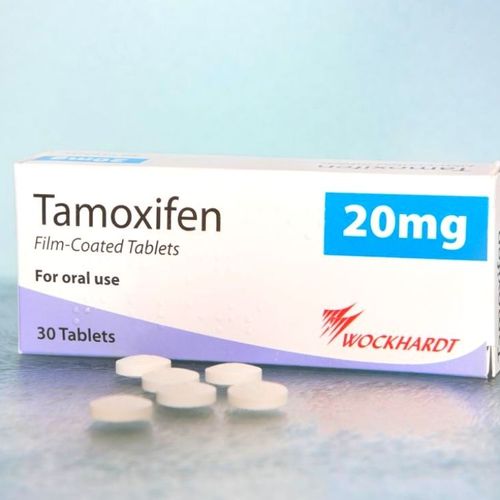The final results of a 13-year study confirm that tamoxifen, a drug long used to treat breast cancer, can also prevent the malignancy in healthy women who are at high risk for the disease.
"This study proves the principle that prevention is a legitimate kind of approach to treating breast cancer, and justifies the continuing research to find [preventive] drugs with less side effects and better risk reduction," says lead researcher Dr. Bernard Fisher, a founding member and director of the National Surgical Adjuvant Breast and Bowel Project (NSABP).
Tamoxifen is one of a class of drugs called selective estrogen receptor modulators (SERMs). These drugs work by attaching to the molecule in breast cancer cells that normally reacts with estrogen, stopping the cancer cells growth and limiting its spread, according to the American Cancer Society.
The Study
The NSABP study tracked the outcomes of more than 13,000 healthy women at high risk for breast cancer. Participants took either 20 milligrams (mg) of tamoxifen or a placebo every day for five years.
Researchers wanted to learn if the drug that is so effective in preventing breast cancer recurrence could also be used to prevent the disease from developing in high-risk women. The study was double-blind, meaning that neither the study participants nor their doctors knew who was getting the medication.
After six years, researchers found that the incidence of invasive breast cancer was nearly 50% lower among women who took tamoxifen -a result so dramatic that researchers lifted the double-blind aspect of the study to allow those women on the placebo to take tamoxifen. Approximately one-third of that group opted to take the drug.
After following the majority of the women for another seven years, the researchers found that the rates of invasive breast cancer continued to be much lower for the women who took tamoxifen. The rate of invasive breast cancer over the course of the study was 43% lower in the tamoxifen group than in the placebo group-there were 42.5 cases per 1,000 women in the placebo group compared with 24.8 cases per 1,000 women in the tamoxifen group.
Also significantly lower was the incidence of noninvasive cancers, such as ductal breast cancer in situ (DCIS), which was 37% lower among the women who took tamoxifen compared with those who took the placebo.
"This is the only proven prevention method for breast cancer," Fisher says.
Benefits Of The Study
Dr. Claudine Isaacs, director of the Clinical Breast Cancer Program at Georgetown University's Lombardi Comprehensive Cancer Center, says this study is significant because it was placebo-controlled, had a very large group of participants and focused on prevention.
"Because it is focused on prevention, they did a very careful assessment of the side-effect profile," she says. Tamoxifen's side effects included a 32% decrease in bone fractures over seven years of follow-up, but an increase in the risk of uterine cancer, stroke, pulmonary embolism and cataracts.
Isaacs says doctors can use a well-validated risk-benefit model that includes a woman's age, medical and family histories as well as other factors to help decide whether tamoxifen might be right for her.
"A clinician should go through the risk-benefit ratio with a patient, and if the benefits outweigh the risks, he can tell her she should consider [tamoxifen]," Isaacs says, adding that it is very much a personal choice.
Reluctance
While researchers estimate that approximately 25% of all American women between 35 and 70 year of age, or 2.5 million women, arc at high risk for breast cancer and could be helped by using tamoxifen, marry arc reluctant to take this drug to help prevent the disease.
In a study conducted at the University of California at Davis, researchers toId255 women that they were eligible for preventive tamoxifen therapy if their estimated risk for breast cancer was 1.66 or above. The estimated average five-year risk among the women in the study was 2.8.
But after an educational session explaining tamoxifen's potential risks and benefits, only 45 of the women-just 17.6%-said that they would be inclined to take the drug on a regular basis to help prevent breast tumors.
Study author Dr. Joy Melnikow, a professor of family and community medicine at UC Davis, says it seemed that the women in the study had seen friends get breast cancer and survive, and weren't as afraid of the disease as one would think. "They didn't see it as a death sentence," she says.
Other Research
In other recent research on tamoxifen, Swedish researchers found that breast cancer survivors who took tamoxifen for five years, rather than two, were not only at a decreased risk of developing cancer in the other breast, but were also at a lower risk of death from all causes, including heart disease.
Trials are now under way involving drugs that might carry fewer side effects than tamoxifen and further reduce breast cancer risk, Fisher says. Raloxifene (Evista), a drug originally developed to treat osteoporosis, is just one of these candidate drugs, he notes.
